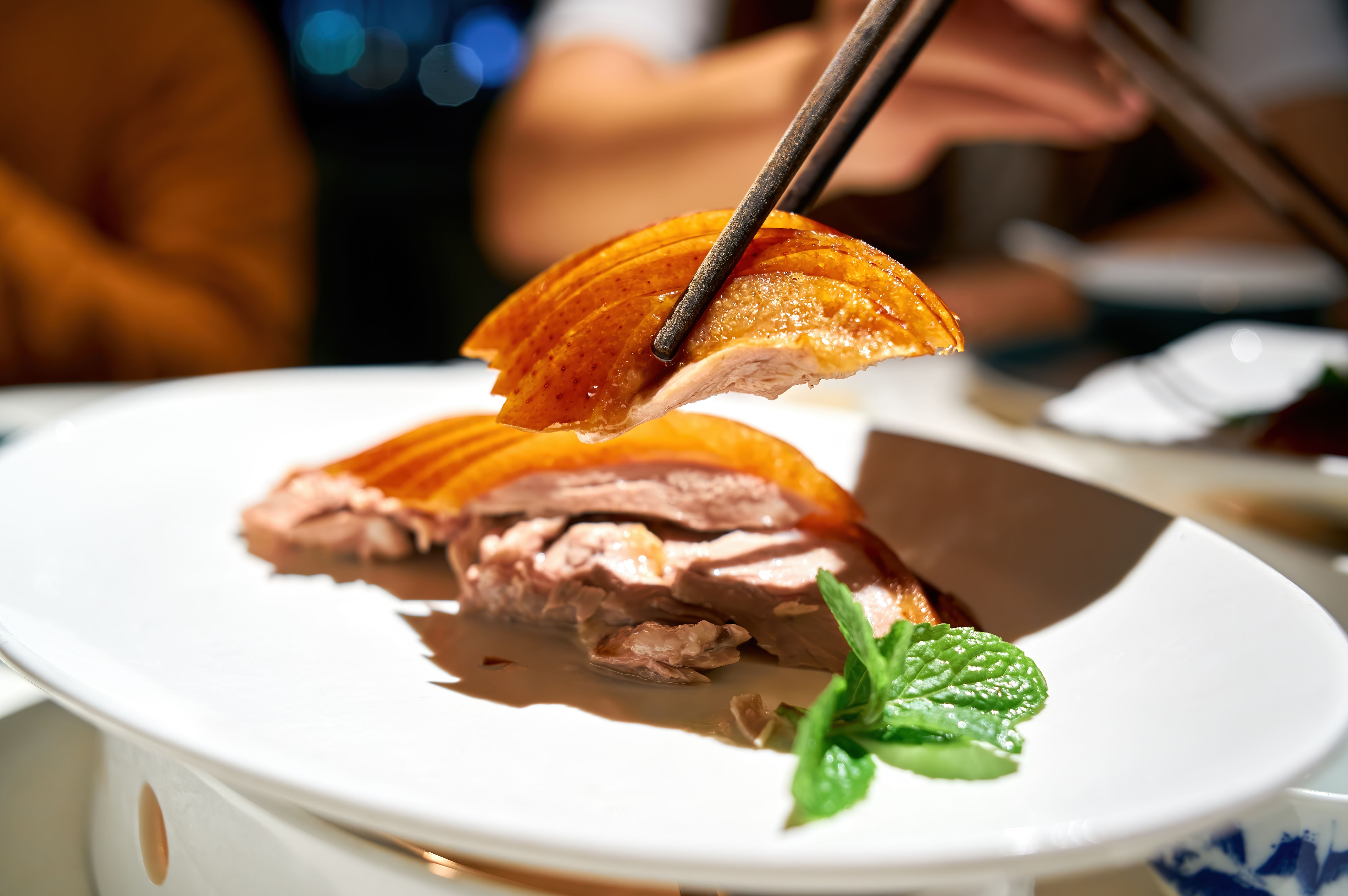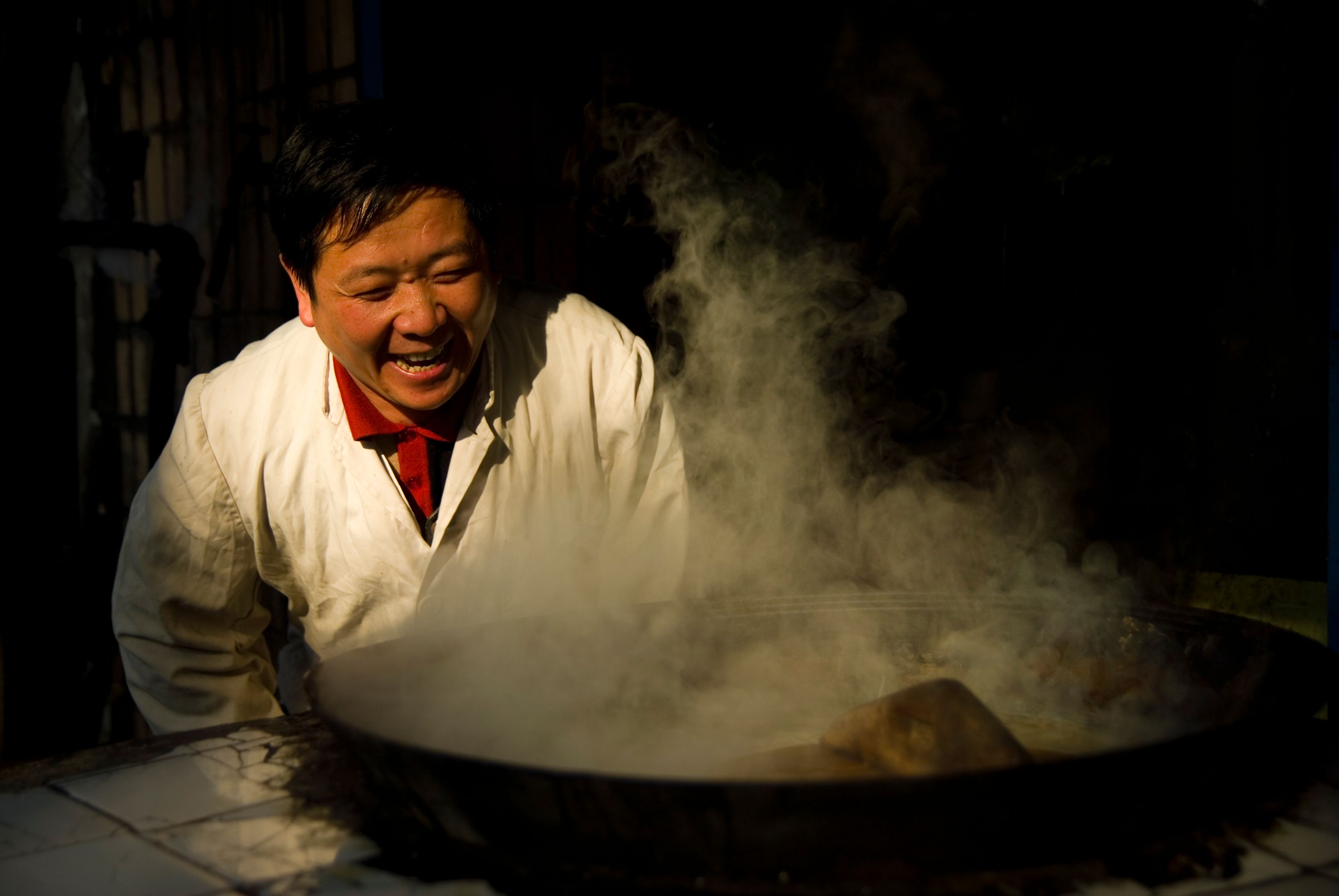Peking Duck: A Culinary Masterpiece from China
Introduction to Peking Duck
Peking Duck is a renowned dish that hails from Beijing, China, and has been savored for centuries. This culinary masterpiece is celebrated for its crispy skin and tender meat, creating a unique harmony of textures and flavors. The preparation of Peking Duck is an art form, involving meticulous techniques to achieve its signature taste.
The dish has become synonymous with Chinese cuisine around the world and is often regarded as a must-try delicacy for food enthusiasts. Its rich history and cultural significance make it more than just a meal; it is an experience that connects diners with the vibrant traditions of China.

The Art of Preparation
The preparation of Peking Duck is a meticulous process that requires skill and precision. Traditionally, the duck is seasoned and then air-dried for several hours to ensure the skin becomes perfectly crispy when roasted. This step is crucial as it allows the fat to render out during cooking, leaving behind a thin, crackling layer of skin.
Once dried, the duck is roasted in a specially designed oven that ensures even cooking. The result is a bird with a stunningly glossy finish and an aroma that is nothing short of irresistible. The carving of the duck is an art in itself, with chefs often showcasing their skills by expertly slicing the bird in front of diners.

Serving Tradition
Peking Duck is traditionally served in three stages. First, the crispy skin is presented, often dipped in sugar or sweet sauce to enhance its flavor. Next, the tender meat is served with thin pancakes, hoisin sauce, and garnishes such as cucumber and scallions. Diners wrap these ingredients together to create a delightful bite.
Finally, the remaining duck can be used in a variety of dishes, such as soups or stir-fries, ensuring nothing goes to waste. This multi-course approach to serving Peking Duck highlights the versatility and creativity inherent in Chinese cuisine.
A Rich History
Peking Duck has a storied history dating back to the Imperial era of China. It was a favorite among emperors and noble families, eventually becoming accessible to the general public. Over time, the dish has evolved, yet its essence remains rooted in tradition.
The rise of Peking Duck coincided with Beijing's development as a cultural and political hub, solidifying its status as an iconic dish of the capital. Today, it stands as a symbol of China's culinary prowess and continues to be a source of national pride.
Global Popularity
While Peking Duck originated in China, its popularity has transcended borders, captivating taste buds worldwide. Many Chinese restaurants globally offer their own versions of this dish, adapting it to suit local palates while preserving its core elements.
Food lovers often seek out authentic Peking Duck experiences when traveling to Beijing, eager to taste the dish in its birthplace. Its global appeal underscores the universal love for well-crafted food that tells a story through its flavors.
Conclusion
Peking Duck is more than just a meal; it is a culinary journey that embodies the rich traditions of Chinese cooking. Its intricate preparation and delightful presentation make it a standout dish that continues to enchant diners around the world.
Whether enjoyed in a bustling Beijing restaurant or at a local eatery abroad, Peking Duck offers an unforgettable taste of China’s culinary heritage. Its enduring popularity is a testament to its status as a true masterpiece in the world of international cuisine.
